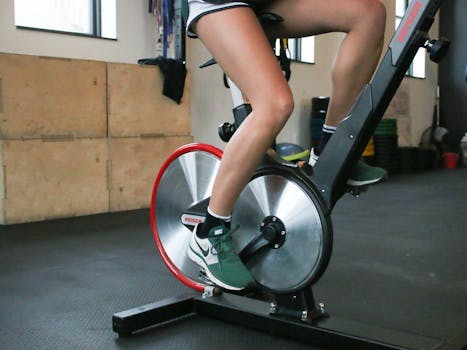
Embrace Low-Impact Cardio Workouts for Joint Health
Takeaways: Low-impact cardio workouts are essential for maintaining joint health, especially for those with existing joint issues or those looking to prevent future problems. Activities like swimming, cycling, and walking can strengthen muscles around the joints, improve flexibility, and enhance cardiovascular fitness without putting excessive strain on the body.
In today’s fast-paced world, maintaining an active lifestyle is crucial for overall health, especially when it comes to our joints. Traditional high-impact workouts can sometimes lead to joint pain and injuries, particularly for those who are older or have previous injuries. This is where low-impact cardio workouts come into play. They offer a gentler way to stay fit while providing numerous benefits to joint health.
What Are Low-Impact Cardio Workouts?

Some popular low-impact cardio exercises include:
- Walking: A natural and easy way to incorporate cardio into your daily routine, walking can be done anywhere and offers the flexibility to adjust intensity.
- Swimming: This is one of the best low-impact exercises, as the water supports your body, reducing stress on your joints while providing resistance for a great workout.
- Cycling: Whether on a stationary bike or outdoors, cycling is an excellent way to improve cardiovascular fitness without straining your knees and hips.
- Elliptical Training: Using an elliptical machine mimics running but with less impact on your joints, making it a great alternative.
- Dance Classes: Many dance styles involve low-impact movements that can elevate your heart rate while being fun and enjoyable.
Benefits of Low-Impact Cardio Workouts for Joint Health

1. Reduced Joint Stress
Low-impact exercises minimize the stress on joints, making them safer options for individuals with arthritis or joint pain. This can help alleviate discomfort and improve overall joint function.
2. Improved Range of Motion
Regular participation in low-impact workouts enhances flexibility and range of motion in the joints. This can lead to better overall mobility and reduced stiffness.
3. Strengthened Muscles
Low-impact cardio workouts help in building the muscles around the joints, offering better support and stability. Stronger muscles can lead to less pressure on the joints, reducing the risk of injury.
4. Enhanced Cardiovascular Health
These workouts also provide cardiovascular benefits, improving heart health and circulation while being gentle on the body.
5. Weight Management
Maintaining a healthy weight is crucial for joint health. Low-impact cardio can assist in burning calories and managing weight effectively without adding stress to the joints.
Tips for Incorporating Low-Impact Cardio into Your Routine

- Start Slow: If you’re new to exercise, begin with short sessions and gradually increase duration and intensity as your fitness improves.
- Mix It Up: To prevent boredom, try a variety of activities. Alternate between walking, swimming, and cycling to keep things interesting.
- Set Realistic Goals: Establish achievable fitness goals that motivate you without overwhelming you. Aim for consistency rather than perfection.
- Listen to Your Body: Pay attention to how your body responds to different exercises. If something causes pain, modify or switch to a different activity.
- Stay Hydrated: Always drink water before, during, and after workouts to keep your joints lubricated and your body functioning well.
Conclusion
Incorporating low-impact cardio workouts into your fitness routine is a fantastic way to support joint health while enjoying the many benefits of exercise. By choosing activities that are gentle on your joints, you can build strength, improve flexibility, and enhance your overall well-being. Remember, it’s important to listen to your body and consult with a healthcare professional if you have any concerns. Start today and pave the way for a healthier, more active lifestyle!
For further reading on joint health and fitness, consider checking out these resources: Arthritis Foundation: Exercise, Healthline: Exercise for Arthritis, and WebMD: Exercise and Arthritis.






